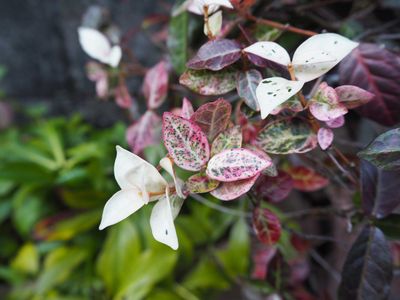Information about Asian Jasmine
Asian jasmine (Trachelospermum asiaticum) grows in the wild in Korea and Japan and is used as a groundcover in this country. It covers your backyard or the wall of your garage rapidly, and survives cooler weather better than many other jasmines. Asian jasmine is planted by homeowners as a quick, low-cost groundcover. The trick to Asiatic jasmine control is to act early to set boundaries for it. Decide where you want the plant and chop it down whenever it moves out of this range.
How to Control Asian Jasmine
If you plant Asian jasmine in your yard, mow the shrub religiously. Calendar periodic mowing appointments and never, ever skip them. It is easy to lose control of jasmine plants. Whenever a branch of this plant touches the soil, that piece sprouts roots. If you allow it to take over your yard, it can be virtually impossible to eradicate. Pruning jasmine vines will work, over time, to reduce the strength of Asian jasmine. Prune the stems ruthlessly right to the ground, or mow them at ground level to get rid of all leaves and stems. This may discourage it since it needs foliage to manufacture its food. The problem with Asian jasmine is that killing the stems and leaves– whether by pruning jasmine vines or by spraying them with herbicide– does not kill the roots. So control of Asian jasmine involves preventing the roots from traveling far afield. Pulling out the plant with as many roots as possible is more effective than pruning jasmine vines. It may enable you to take control of jasmine that has overrun your yard. However, this requires a lot of time and effort on your part.
Asiatic Jasmine Control with Herbicides
If your jasmine vine is near or tangled up with other desirable shrubs, using herbicides may not be a productive idea. No herbicide eliminates the one without also killing the other. You’ll need to use a shielded spray and go slowly. You can try painting the foliage of the Asian jasmine with herbicide. However, remember that killing the above-ground portion of this vine does not kill the roots.
